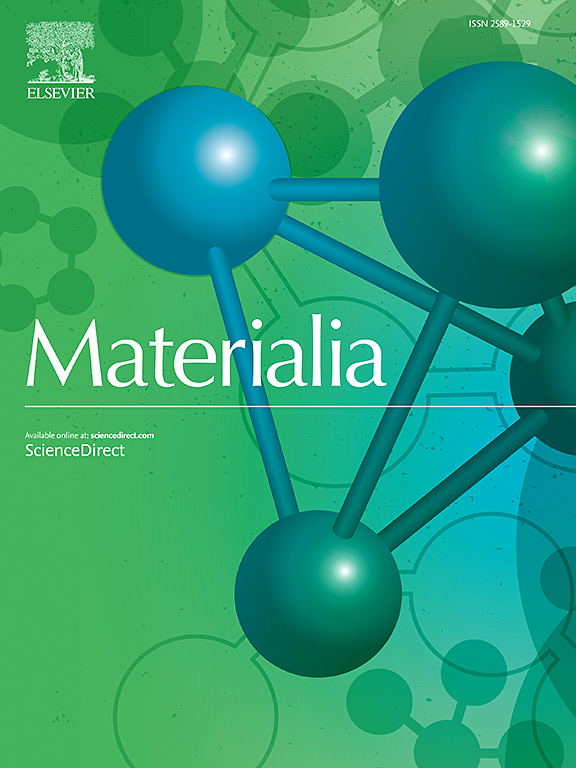一种新型无相分离水合盐相变材料的制备及其热性能
IF 2.9
Q2 MATERIALS SCIENCE, MULTIDISCIPLINARY
引用次数: 0
摘要
本文讨论了水合盐作为分布式能源系统蓄热器相变材料的应用。尽管它们具有潜力,但相分离和过冷等挑战阻碍了它们的广泛应用。常用的有成核剂和增稠剂的溶液往往达不到要求。该研究通过复合材料探索永久性解决方案,并探索保持稳定性的新方法。介绍了两种新型共晶水合盐:SAT+SMN(三水合乙酸钠+非水合偏硅酸钠)和SAT+LAD(三水合乙酸钠+二水合乙酸锂)。共同的离子效应降低了成核剂的溶解度,创造了持久的晶体种子,以触发成核并减少过冷。热性能方面,SMN质量分数为20%的SAT+SMN熔点为52.2℃,潜热为248.4 J/g。含有10% LAD质量分数的SAT+LAD在49.7℃熔化,潜热为212.8 J/g。SAT+SMN过冷度降至0.5℃以下,SAT+LAD过冷度降至3℃以下。经过500次循环后,SAT+SMN在0.5°C内保持过冷度,潜热仅下降0.02%,表现出优异的热稳定性。在SAT中引入具有更多极性分子的水合盐,增加了固态和液态之间氢键数量和键能的差异。这导致了具有不同晶格参数和更小细胞尺寸的新晶体。传统的搅拌可以达到2 μm的均匀混合,而超声波搅拌可以实现更均匀的分布,这对于有效的储热至关重要。本文章由计算机程序翻译,如有差异,请以英文原文为准。

Preparation and thermal properties of a new hydrated salt phase change material without phase separation
This article discusses the use of hydrated salts as phase change materials for heat accumulators in distributed energy systems. Despite their potential, challenges like phase separation and supercooling hinder their widespread use. Common solutions with nucleating agents and thickeners often fall short. The study explores permanent solutions through composite materials and investigates new ways to maintain stability. Two new eutectic hydrated salts are introduced: SAT+SMN (sodium acetate trihydrate + sodium metasilicate nonahydrate) and SAT+LAD (sodium acetate trihydrate + lithium acetate dihydrate). The common ion effect reduces the solubility of nucleating agents, creating durable crystal seeds to trigger nucleation and reduce supercooling. In terms of thermal properties, SAT+SMN with a 20 % SMN mass fraction has a melting point of 52.2 °C and a latent heat of 248.4 J/g. SAT+LAD with a 10 % LAD mass fraction melts at 49.7 °C with a latent heat of 212.8 J/g. Supercooling in SAT+SMN is reduced to less than 0.5 °C, and in SAT+LAD, it drops to less than 3 °C. After 500 cycles, SAT+SMN maintains a supercooling degree within 0.5 °C with only a 0.02 % decrease in latent heat, demonstrating excellent thermal stability. The introduction of hydrated salts with more polar molecules in SAT increases the difference in the number of hydrogen bonds and bond energy between the solid and liquid states. This leads to new crystals with different lattice parameters and smaller cell sizes. While traditional stirring achieves uniform mixing up to 2 μm, ultrasonic mixing allows for a more even distribution, crucial for effective heat storage.
求助全文
通过发布文献求助,成功后即可免费获取论文全文。
去求助
来源期刊

Materialia
MATERIALS SCIENCE, MULTIDISCIPLINARY-
CiteScore
6.40
自引率
2.90%
发文量
345
审稿时长
36 days
期刊介绍:
Materialia is a multidisciplinary journal of materials science and engineering that publishes original peer-reviewed research articles. Articles in Materialia advance the understanding of the relationship between processing, structure, property, and function of materials.
Materialia publishes full-length research articles, review articles, and letters (short communications). In addition to receiving direct submissions, Materialia also accepts transfers from Acta Materialia, Inc. partner journals. Materialia offers authors the choice to publish on an open access model (with author fee), or on a subscription model (with no author fee).
 求助内容:
求助内容: 应助结果提醒方式:
应助结果提醒方式:


